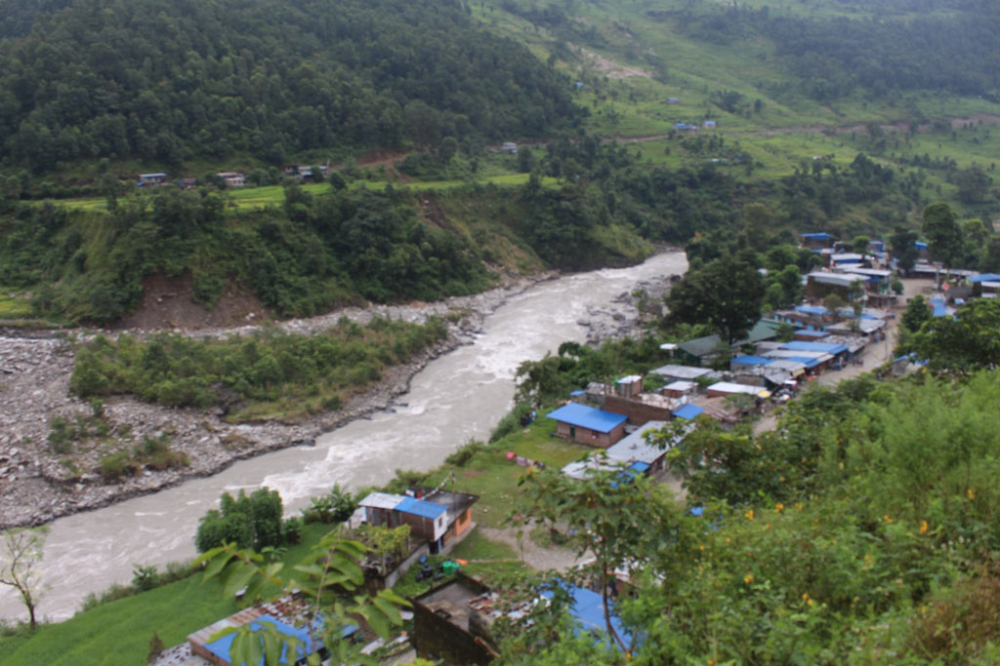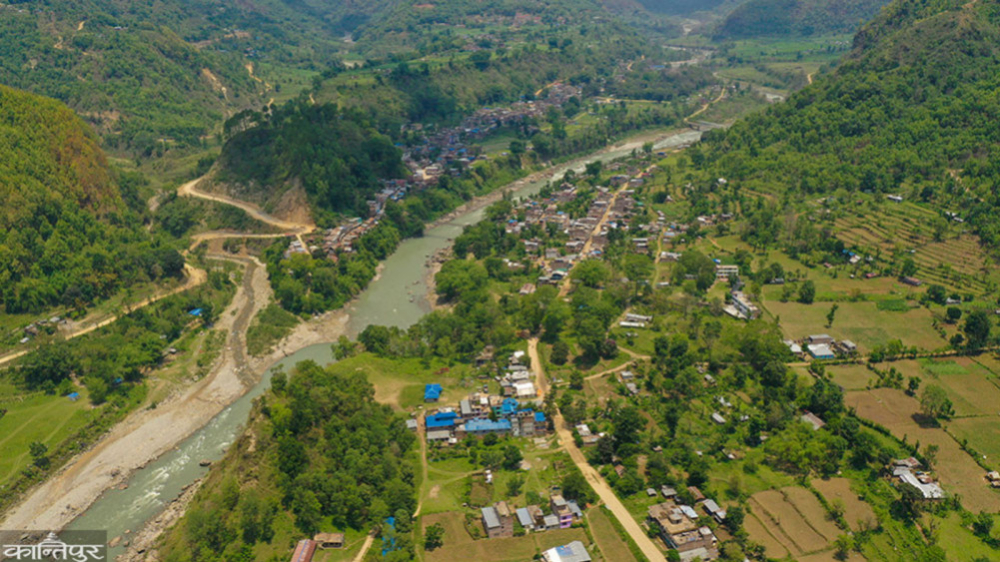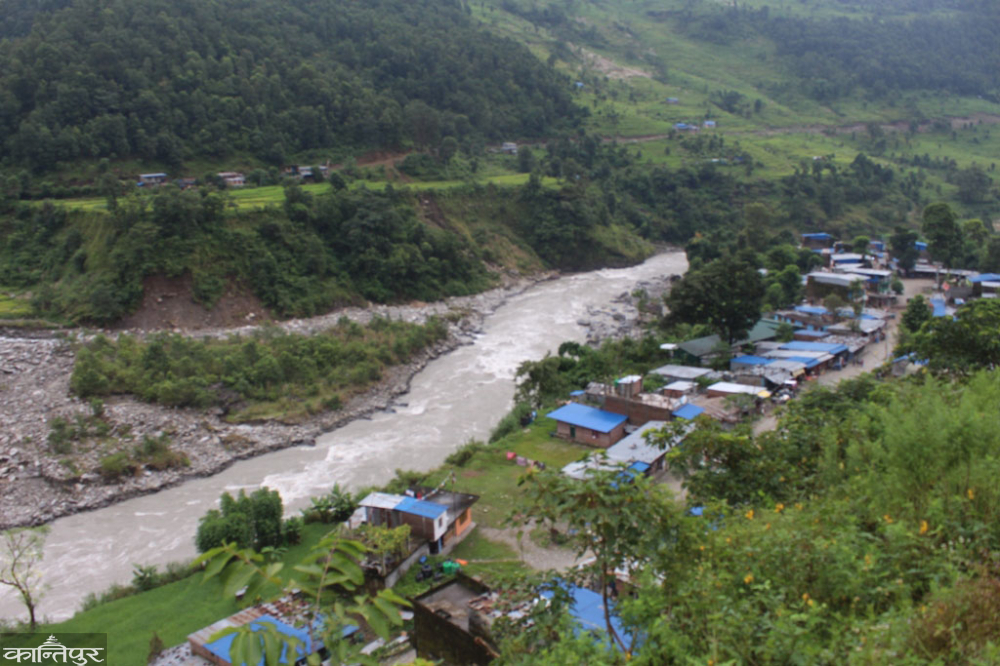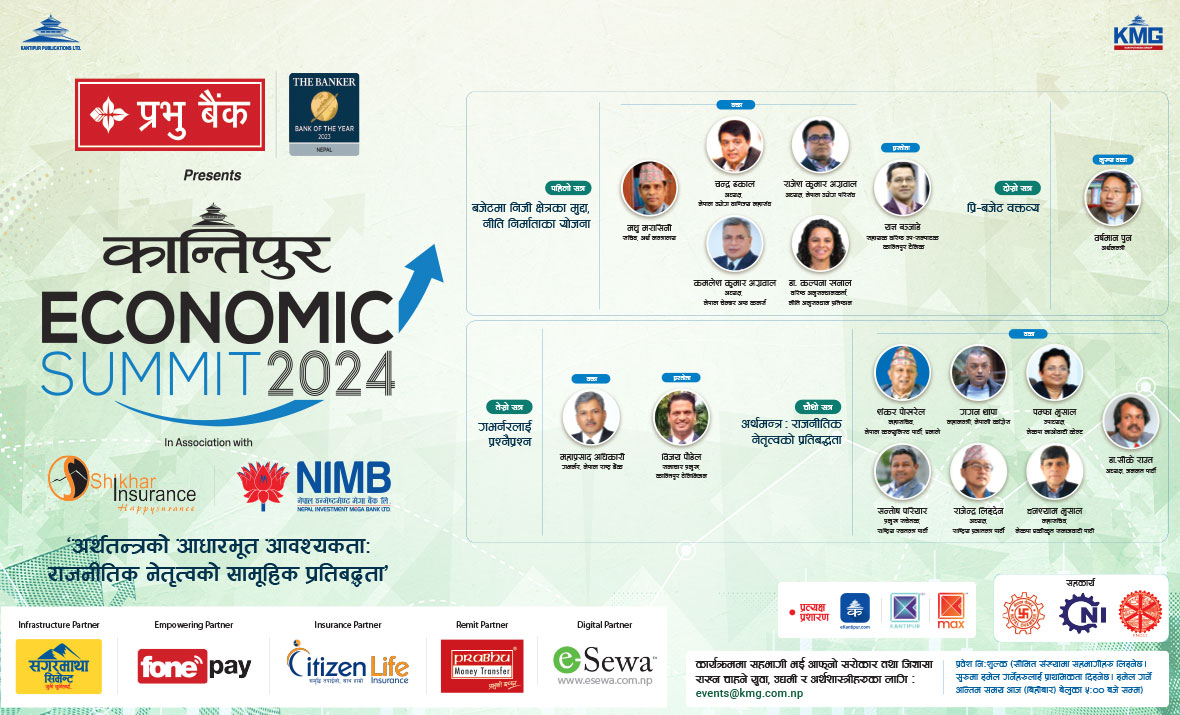1200 MW Budhigandaki: Investment model in 12 years
We use Google Cloud Translation Services. Google requires we provide the following disclaimer relating to use of this service:
This service may contain translations powered by Google. Google disclaims all warranties related to the translations, expressed or implied, including any warranties of accuracy, reliability, and any implied warranties of merchantability, fitness for a particular purpose, and noninfringement.


The investment modality of the 1,200 MW Budhigandaki hydropower project has been prepared with the goal of completing it in the next 8 years. Currently, the total installed capacity of the country is more than 2700 MW, but only 1400 MW is produced during the dry season. 450 MW of the shortfall has been imported from India. If the country's largest reservoir project, Budhigandaki, is completed, the country's energy system will become stable and reliable, and dependence on India will also be removed.



However, the investment framework file of Budhigandaki, which will be built with indigenous investment, has only recently been sent to the Ministry of Finance for approval. After getting the approval of the Ministry of Finance, the Ministry of Energy will submit the proposal to the Council of Ministers. Once the cabinet approves the proposed investment framework, the project will proceed towards construction. The government had started the project in the financial year 069/070 with the aim of completing the project in the financial year 083/084. It is mentioned in the 60th report of the Auditor General's Office that the total cost estimate at that time was 2 trillion 60 billion rupees. According to the General Accounts, 41.48 billion 1.2 million rupees have been spent on land acquisition, compensation, and distribution of compensation for the project so far.
According to the 18th meeting of the Board of Directors of Budhigandaki Jalvidyut Company Limited, the investment plan has been proposed to start in the next financial year and complete within the financial year 2088/89. Jagat Shrestha, the chief executive officer of Budhigand's hydropower company, said that the meeting of the board of directors approved two options and submitted them to the Ministry of Energy, Water Resources and Irrigation for further decision. "The Ministry of Energy has already sent it to the Ministry of Finance for approval," he said.
43 billion compensation was distributed to those affected by the Budhigandaki project
The meeting of the company's board of directors held on Chait 1 approved a proposal with two options related to the project's investment structure and financial plan. In the budget of the current financial year, it is mentioned that the construction of a project with a capacity of 1,200 megawatts will be decided and the construction will be started to address the electricity demand of the dry season and to export hydropower. The cabinet meeting held on November 23 had decided to give instructions to determine the investment framework of the project. The company has made a plan for the estimated total cost, financial planning framework and returns by looking at the two situations when the government provides the low probability fund (Viability Gap Funding-VGF) in the project and not. To develop the
 project, the cost of the project is estimated to be 3 trillion 10.47 billion if VGF is provided to the company of Budhigand which is required for land acquisition from the government, restoration of public infrastructures, environment protection and use of forest area. In the absence of VGF, the total construction cost of the project is estimated at 3 trillion 98 billion 2 crore rupees. The cost has been estimated on the basis of non-provision of VGF and land acquisition including the expenses incurred by the government in equity capital and available in the form of more subsidized loan investments.
project, the cost of the project is estimated to be 3 trillion 10.47 billion if VGF is provided to the company of Budhigand which is required for land acquisition from the government, restoration of public infrastructures, environment protection and use of forest area. In the absence of VGF, the total construction cost of the project is estimated at 3 trillion 98 billion 2 crore rupees. The cost has been estimated on the basis of non-provision of VGF and land acquisition including the expenses incurred by the government in equity capital and available in the form of more subsidized loan investments.
The option of raising 25 percent equity and 75 percent debt in the cost including the interest for the construction period has been put forward. According to this option, a total of 2 trillion 98 billion loans and 1 trillion equity capital will have to be raised for the project. Of the total loans, government's subsidized loans (at one percent interest rate) will be 2.6 billion rupees and commercial loans will be equal to 97.97 billion rupees. The government's own capital investment will be 51 percent (51 billion) of the total capital investment.
Out of the remaining 49 percent, 20 percent (20 billion) of the Nepal Electricity Authority, 9 percent (9 billion) of other government and public bodies, 10 percent (10 billion) of the general public and 10 percent (10 billion) of the project-affected residents will be raised as own capital. While investing in this option, it is estimated that the 'Equity Internal Rate of Return' (EIRR) will be 11.25 percent and the Return on Equity (ROE) will be 17.54 percent. The target is to start the construction from the next financial year and complete it in 8 years. According to the company, the target is to start the construction from the financial year 2081/82 and complete the project in the financial year 2088/89.
 In the second option, when the government provides 73 billion 20 million as VGF, the total cost of the project is estimated to be 3 trillion 10 billion 47 million. The government of Nepal has provided 73.2 billion VGF for land acquisition, restoration of public infrastructure, environment protection and use of forest areas, 70% loan and 30% equity. According to the proposed investment framework, it is estimated that 2 trillion 18 billion 26 million rupees will be in the form of loans and 92 billion 21 million rupees as equity. Among the total loans, subsidized loans (at 1 percent interest rate) are estimated at 1 trillion 39 billion 91 crores and commercial loans at 78 billion 35 crores.
In the second option, when the government provides 73 billion 20 million as VGF, the total cost of the project is estimated to be 3 trillion 10 billion 47 million. The government of Nepal has provided 73.2 billion VGF for land acquisition, restoration of public infrastructure, environment protection and use of forest areas, 70% loan and 30% equity. According to the proposed investment framework, it is estimated that 2 trillion 18 billion 26 million rupees will be in the form of loans and 92 billion 21 million rupees as equity. Among the total loans, subsidized loans (at 1 percent interest rate) are estimated at 1 trillion 39 billion 91 crores and commercial loans at 78 billion 35 crores.
In this investment framework, an investment of 92 billion 21 crore rupees has been proposed. Out of which, the government's own capital investment will be 51 percent (47 billion 3 million). Out of the remaining 49 percent, the Nepal Electricity Authority contributed 20 percent (18 billion 44 crores), other government and public bodies 9 percent (8 billion 30 crores), common people's own capital investment 10 percent (9 billion 22 crores) and 10 percent of the residents of the project affected areas (9 billion 22 crore) has been proposed to raise equity investment. In this framework, EIRR is estimated to be 13.46 percent and ROE is 21.70 percent.
The board of directors of the company has also decided to recommend a review of the financial structure by ensuring the minimum equity ratio, acceptable return on share investment and the cash flow required to repay the installment loan with interest within the period of the project construction period and construction cost. The board of directors has also decided to recommend the provision of electricity license for 50 years to make the project financially attractive for investment.
The Budhigandaki hydropower project with a reservoir proposed for construction on the Budhigandaki river, which flows through the border of Gorkha and Dhading districts, is one of the projects of national pride. This project with 1200 MW connected capacity will have a 263 meter high dam. According to the project, a dam of 263 meters height and 700 meters width will be constructed between Gyalchok in Gorkha and Salang in Dhading at a distance of 2 km from Benighat on Prithvi Highway. The said dam will create a 22 km man-made lake in Netravati (Ankhu) and about 45 km in Budhigandaki.
079 The Council of Ministers meeting held on 24th of Chait decided to make the project through domestic investment in the company model. According to the same decision, the company was established on June 21, 2079 with majority of the shares being owned by the government. After the government's decision to build the project itself, it was entrusted to NEA Engineering Company under the Electricity Authority for cost review.
The project cost prepared by the French company Tractable Engineering has been reviewed by NEA Engineering so that the cost of the project is equal to 3 trillion 32 billion rupees. In the feasibility study and detailed design report of the project prepared by Tractabel Engineering in 2072, the total cost was estimated to be equal to 2 billion 59 million 27 million 50 thousand US dollars. According to the company, this estimate has been made after analyzing the cost according to the Forest Regulations, 2079 and the procedure for using forest area for national priority plans-2076.
 The task force chaired by the then Vice President of the National Planning Commission, Swarnim Wagle, suggested that the Budhigandaki project could be built by creating a specialized project implementation unit as a subsidiary company of the Electricity Authority. It is mentioned in the report of the working group that 35 percent of the estimated cost equal to 2 trillion 70 billion rupees can be met through supplementary funds (viability gap funding). The Budhigandaki project has been mired in frequent political disputes and repeated decisions by the government. Decisions to build the
The task force chaired by the then Vice President of the National Planning Commission, Swarnim Wagle, suggested that the Budhigandaki project could be built by creating a specialized project implementation unit as a subsidiary company of the Electricity Authority. It is mentioned in the report of the working group that 35 percent of the estimated cost equal to 2 trillion 70 billion rupees can be met through supplementary funds (viability gap funding). The Budhigandaki project has been mired in frequent political disputes and repeated decisions by the government. Decisions to build the
project by ourselves and sometimes to give it to the Chinese company Gejuwa without competition were made by the previous government. Chairman of the Maoist Center Pushpa Kamal Dahal decided to give it to Budhigand's Gejuwa when he was the Prime Minister for the second time. But in 074, the government led by Sher Bahadur Deuba canceled it. Later, after the majority government was formed under the leadership of KP Sharma Oli, it was decided to give the project to Gejuwa again. In this way, there does not seem to be any significant progress in Budhigandaki due to the play of various political parties and interest groups. The project will produce 1,480 gigawatt hours of energy in winter. Similarly, 1 thousand 975 gigawatt hours of energy will be produced in Barkha. The cost of
projects is increasing
Delays in project construction are increasing costs. According to the Auditor General's report, the initial cost of the project was 2 trillion 60 billion rupees. In the feasibility study and detailed design report of the project prepared by Tractabel Engineering in 2072, the total cost was 3 trillion 10 billion rupees. Another study conducted two years after the company submitted the report showed that costs would decrease. The report of the 'Committee Formed to Prepare the Investment Blueprint for Budhigandaki Hydropower Project Construction-2074' under the coordination of the then Vice Chairman of the National Planning Commission, Wagle, stated that the project can be constructed at a cost of 10 percent less than the cost prepared by Tractable Engineering. The report also states that the project can be built within 8 years with domestic investment.
 NEA Engineering had increased the cost by about 22 billion rupees. That is, the total construction cost of the project reviewed by NEA Engineering was increased to 3 trillion 32 billion rupees. The company has now proposed 3 trillion 83 billion 67 crore rupees if VGF is provided and 3 trillion 98 billion 2 crore rupees if VGF is not provided, including interest for the construction period. According to Shrestha, the chief executive officer of the company, the project will be contracted under the Engineering Procurement Construction (EPC) model.
NEA Engineering had increased the cost by about 22 billion rupees. That is, the total construction cost of the project reviewed by NEA Engineering was increased to 3 trillion 32 billion rupees. The company has now proposed 3 trillion 83 billion 67 crore rupees if VGF is provided and 3 trillion 98 billion 2 crore rupees if VGF is not provided, including interest for the construction period. According to Shrestha, the chief executive officer of the company, the project will be contracted under the Engineering Procurement Construction (EPC) model.
"If the contract to build a dam is obtained, it should be completed within the specified time, if it takes more than the specified time, the variation will not be adjusted, so the cost cannot be increased," he said. He said that the work is being done with the goal of starting the project from next year. He said that the work of distributing the compensation is going on now, he informed that the company is also doing the preliminary work related to the contract.
प्रकाशित : चैत्र १६, २०८० १०:३५

 २१.१२°C काठमाडौं
२१.१२°C काठमाडौं















